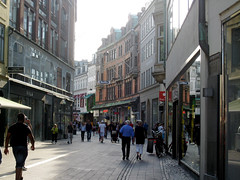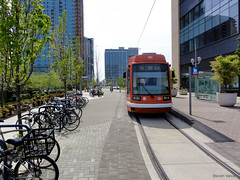
Last week, the Institute of Transportation and Development Policy (ITDP) released Our Cities Ourselves: 10 Principles for Transport in Urban Life, a publication explicating “ten keys to building successful cities” and “show[ing] how cities from New York to Nairobi can meet the challenges of rapid population growth and climate change while improving their competitiveness.”
The publication is co-authored by visionary Danish urbanist Jan Gehl and Walter Hook, ITDP’s executive director. ITDP is an international organization founded in 1985 by my friend Michael Replogle to “promote environmentally sustainable and socially equitable transportation worldwide” and to “work with city governments and local advocacy groups to implement projects that reduce poverty, pollution, and oil dependence.”


Jan Gehl is arguably as important to the cause of cities as Jane Jacobs, and obviously that’s saying a lot. His greatest contribution is in the philosophy and design of public spaces, including streets and pedestrian life. Copenhagen's renowned Strøget, the longest pedestrian shopping street in Europe, is generally considered to be the result of Gehl's work.
Here are the ten principles, summarized in a press release (I confess that I have not yet read the report):
- Walk the walk: Create great pedestrian environments.
- Powered by people: Create a great environment for bicycles and other non-motorized vehicles.
- Get on the bus: Provide great, cost-effective public transport.

- Cruise control: Provide access for clean passenger vehicles at safe speeds and in significantly reduced numbers.
- Deliver the goods: Service the city in the cleanest and safest manner.
- Mix it up: Mix people and activities, buildings and spaces.
- Fill it in: Build dense, people and transit oriented urban districts that are desirable.
- Get real: Preserve and enhance the local, natural, cultural, social and historical assets.
- Connect the blocks: Make walking trips more direct, interesting and productive with small-size, permeable buildings and blocks.
- Make it last: Build for the long term. Sustainable cities bridge generations. They are memorable, malleable, built from quality materials, and well maintained.
Move your cursor over the images for credit information.
Kaid Benfield writes (almost) daily about community, development, and the environment. For more posts, see his blog's home page.